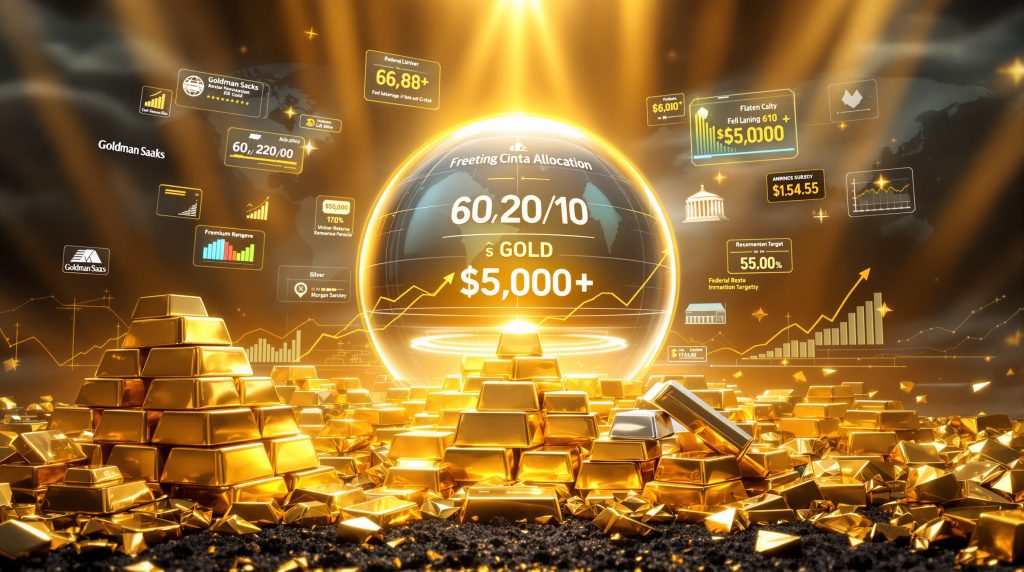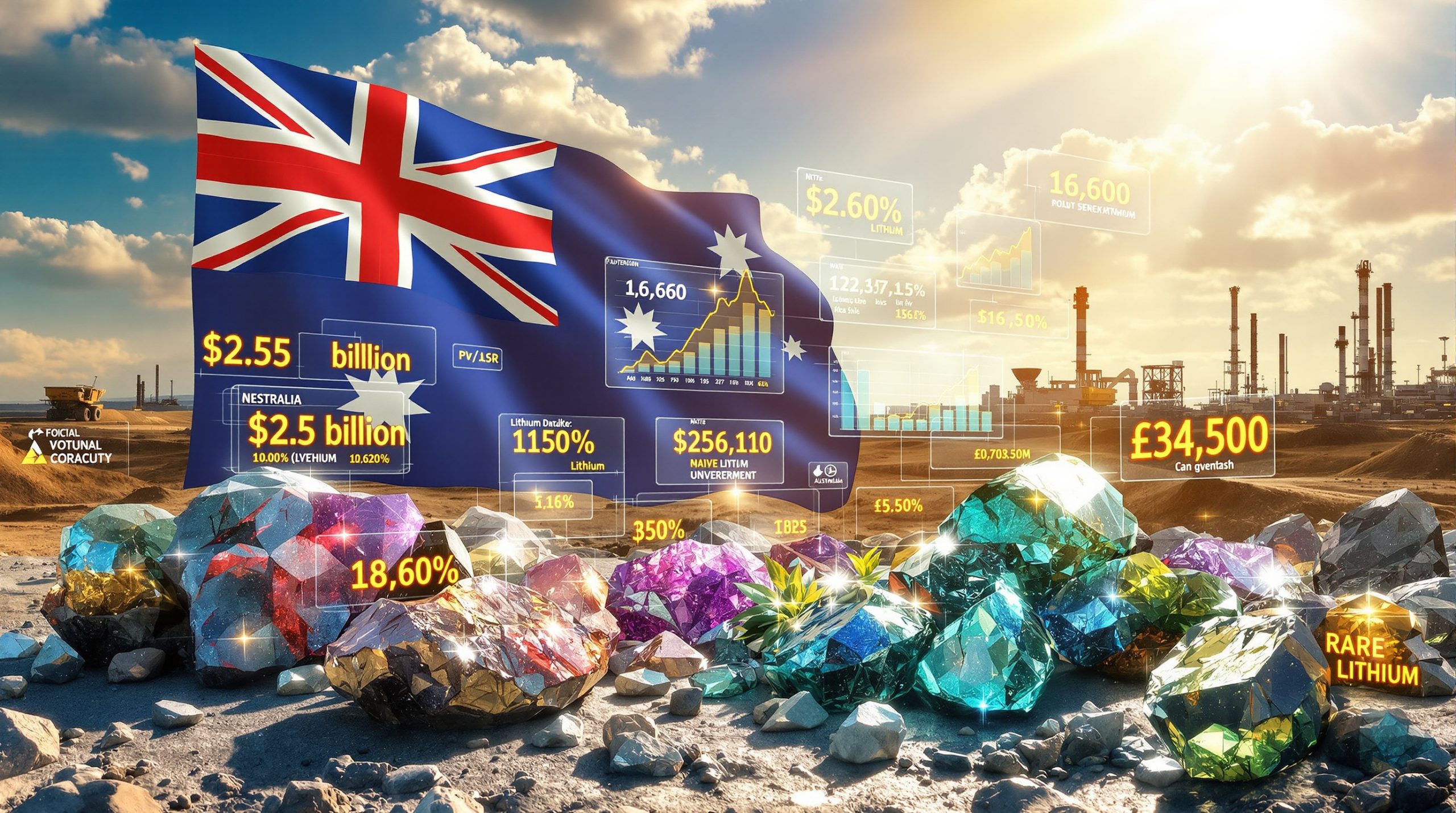What Is Driving the Current Precious Metals Rally?
The precious metals market is experiencing an extraordinary transformation as institutional perspectives shift dramatically toward gold and silver investments. Traditional portfolio allocations are being reconsidered as major financial institutions abandon conventional wisdom about precious metals holdings. Furthermore, the gold highs analysis reveals unprecedented institutional demand driving this market transformation.
The Institutional Mindset Revolution
Leading investment banks are fundamentally altering their stance on precious metals allocation. According to recent analysis, Morgan Stanley's Chief Investment Officer has recommended a revolutionary portfolio structure: 60% equities, 20% bonds, and 20% gold—a significant departure from the traditional 60/40 stock-bond split that has dominated investment strategies for decades.
This shift represents more than tactical adjustment; it signals recognition that traditional bond investments face unprecedented risks from duration exposure and yield volatility. Financial advisors are increasingly questioning the logic of holding long-term government securities when shorter-duration alternatives offer better risk-adjusted returns.
Key Portfolio Allocation Changes:
• Traditional model: 60% stocks, 40% bonds
• New institutional preference: 60% stocks, 20% bonds, 20% gold
• Rationale: Reduced bond duration risk, inflation hedge integration
The momentum in gold and silver prices reflects this fundamental reconsideration of asset allocation principles. Duration risk in bonds has become a critical concern, with some advisors advocating against holding securities longer than two years due to insufficient risk compensation.
Why Are Major Banks Predicting $5,000+ Gold Prices?
Goldman Sachs Flow Analysis
Goldman Sachs has published research indicating that if merely 1% of privately held U.S. Treasury holdings were redirected into gold investments, the metal's price could surge to approximately $5,000 per ounce. This calculation demonstrates the massive potential impact of even modest institutional reallocation on momentum in gold and silver prices.
The analysis highlights a critical dynamic: the relative size of the Treasury market compared to the gold market creates enormous price sensitivity to investment flows. When institutional capital begins rotating from government securities into precious metals, the mathematical impact on gold prices becomes exponentially amplified. In addition, central bank purchases continue providing structural support for precious metals demand.
JPMorgan's Unprecedented Price Targets
JPMorgan's leadership has made remarkable statements regarding gold's potential trajectory, suggesting prices could reach $5,000 to $10,000 per ounce in current market conditions. These projections from one of the world's largest financial institutions represent a dramatic departure from previous conservative precious metals outlooks.
The bank's analysis focuses on the fundamental disconnect between fiat currency systems and tangible asset backing. According to recent commentary, holding gold is considered semi-rational in current market conditions, acknowledging that while gold doesn't provide dividends, traditional bonds may lose value as currency devaluation accelerates.
The momentum in gold and silver prices reflects institutional recognition that traditional investment assumptions may no longer hold in current monetary conditions.
How Are Central Bank Policies Fueling Precious Metals Momentum?
Federal Reserve Rate Cut Expectations
Market probability calculations show 96.8% likelihood of a 25-basis-point interest rate reduction, with additional cuts anticipated through year-end. These expectations are eliminating the opportunity cost traditionally associated with holding non-yielding precious metals.
Current Fed Policy Indicators:
• Rate cut probability: 96.8% for 25 basis points
• Additional cuts expected: December meeting likely
• Quantitative tightening: Potentially ending due to liquidity concerns
The Federal Reserve's policy stance is creating conditions that historically support momentum in gold and silver prices. With the central bank potentially approaching the end of its quantitative tightening program, precious metals face reduced headwinds from monetary policy. Moreover, the gold price forecast suggests continued upward pressure from accommodative monetary conditions.
Quantitative Tightening Reversal Signals
Federal Reserve Chairman Jerome Powell has indicated that reserve levels may soon reach adequate status, suggesting the current quantitative tightening program could conclude. This development would remove downward pressure on precious metals prices while potentially signaling future monetary expansion.
The Fed's balance sheet reduction of approximately $5 billion monthly represents a minimal portion of the $7 trillion total, leading analysts to question the program's effectiveness and sustainability. Comments from the National Association of Business Economists event suggest liquidity conditions are showing signs of gradual tightening, including firming of repo rates and temporary pressures on selected dates.
Quantitative Tightening Analysis:
| Metric | Current Status | Impact on Precious Metals |
|---|---|---|
| Fed Balance Sheet | ~$7 trillion | Large base for potential expansion |
| Monthly QT | $5 billion | Minimal impact on liquidity |
| Reserve Levels | Approaching "ample" | Reduced monetary policy headwinds |
| Liquidity Conditions | Gradually tightening | Supportive for gold/silver |
What Geopolitical Factors Are Accelerating Gold and Silver Demand?
Trade War Escalation Impact
Recent tariff announcements have created significant volatility across commodity markets, with precious metals benefiting from safe-haven demand. The imposition of 100% tariffs on rare earth elements has demonstrated how quickly trade disputes can escalate, driving investors toward assets insulated from geopolitical tensions.
These developments have created a two-tier commodity market where industrial metals face tariff-related volatility while precious metals attract defensive investment flows. Copper prices, for example, experienced dramatic swings following trade policy announcements, dropping from $5.15 to $4.87 before attempting recovery. The us-china trade war impact continues shaping commodity market dynamics.
China's implementation of application requirements for rare earth exports adds another layer of complexity to global supply chains, further supporting the momentum in gold and silver prices as alternative stores of value.
Regional Conflict Considerations
Ongoing geopolitical tensions across multiple regions continue supporting precious metals demand as investors seek portfolio protection against escalating conflicts. The persistence of regional instabilities has created sustained safe-haven buying that extends beyond temporary crisis responses.
Recent developments include:
• Continued military operations in Eastern Europe affecting energy infrastructure
• Diplomatic engagement attempts between major powers
• Ongoing Middle East tensions with potential for escalation
• Iran-related risks maintaining elevated geopolitical premiums
These factors collectively contribute to the sustained momentum in gold and silver prices by maintaining underlying safe-haven demand even during periods of market optimism.
How Are Mining Companies Capitalising on Higher Precious Metals Prices?
Producer Margin Expansion
Gold mining companies are experiencing exceptional profitability as production costs remain relatively stable while selling prices reach historic highs. Companies selling gold at current levels above $4,300 per ounce are achieving margin expansion that significantly exceeds previous operational periods.
The GDX gold miners ETF has reflected this operational leverage, with mining equities outperforming the underlying commodity as investors recognise the amplified profit potential from higher gold prices. This performance demonstrates how momentum in gold and silver prices translates into enhanced corporate profitability.
Quarterly Earnings Expectations
Q4 earnings are expected to show even stronger performance than Q3 results, with companies like Newmont Corporation serving as bellwether indicators for the sector's financial health. The timing of these earnings releases coincides with continued precious metals strength, creating positive feedback loops for mining equity valuations.
Mining Sector Performance Indicators:
• Q4 earnings expectations: Significantly improved margins
• Production costs: Relatively stable
• Selling prices: Historic highs above $4,300/oz gold, $54/oz silver
• Investor interest: Increasing institutional allocation
Junior Mining Market Activity
The junior mining investment sector is experiencing remarkable capital raising activity, with financing levels approaching historic peaks. Companies with market capitalisations below $1.5 billion have raised $5.2 billion CAD as of October 2025, approaching 2020 levels of $5.5 billion despite being only mid-way through the year.
Historical Financing Data (CAD Billions):
| Year | Amount Raised | Market Conditions |
|---|---|---|
| 2011 | $8.0 | Ultra-frothy bull market peak |
| 2013-2015 | <$2.0 | Bear market lows |
| 2020 | $5.5 | COVID-era monetary expansion |
| 2021 | $7.0+ | Euphoric market conditions |
| 2025* | $5.2 | *As of October 10th |
This financing activity indicates strong investor appetite for precious metals exposure through equity investments, supporting the momentum in gold and silver prices through increased exploration and development activities.
What Role Does Industrial Demand Play in Silver's Momentum?
Technology Sector Applications
Silver's industrial applications continue expanding across renewable energy, electronics, and automotive sectors. Solar panel production alone consumes substantial silver quantities, while electric vehicle manufacturing creates additional demand streams that support price floors even during investment sentiment fluctuations.
The unique position of silver as both an industrial metal and precious metal creates dual-source demand that differs significantly from gold's primarily investment-driven market. This industrial foundation provides fundamental support for momentum in gold and silver prices, particularly for silver. Furthermore, the silver market squeeze movement highlights growing investor interest in silver's supply-demand dynamics.
Supply-Demand Imbalances
Industrial silver consumption has created structural deficits that investment demand amplifies. Unlike gold, where investment flows primarily drive price movements, silver benefits from both investment interest and fundamental supply-demand imbalances in industrial applications.
Silver Demand Drivers:
• Solar energy: Expanding global installation capacity
• Electric vehicles: Higher silver content per unit
• Electronics: Continued technological advancement
• Investment demand: Growing institutional interest
The combination of these factors creates compounding effects that support sustained momentum in silver prices, particularly when investment flows increase alongside industrial demand growth. However, analysts caution about record high volatility as prices reach unprecedented levels.
How Should Investors Navigate Current Precious Metals Momentum?
Risk Management Considerations
While precious metals momentum appears strong, investors should maintain disciplined approaches to position sizing and profit-taking strategies. The current rally's intensity suggests potential for significant volatility, requiring careful attention to risk management principles.
Market participants should be particularly cautious about maintaining investment discipline during periods of strong momentum. As one market observer noted, bull markets tend to elevate many securities regardless of underlying quality, creating both opportunities and risks for investors.
Investment Approach Guidelines:
• Maintain position sizing discipline regardless of momentum strength
• Consider profit-taking strategies for speculative positions
• Focus on quality companies and established producers
• Avoid compromising investment principles for short-term gains
Due Diligence Importance
As precious metals momentum attracts increased investor attention, market participants should exercise heightened due diligence when evaluating investment opportunities. Bull markets often elevate lower-quality investments alongside legitimate opportunities, requiring careful analysis and selection processes.
The influx of new mining projects across gold, silver, and critical minerals sectors demands particular scrutiny. Investors should be prepared for a wave of new offerings and maintain selective approaches rather than broad-based speculation.
Speculation vs. Investment Strategy
For those inclined toward speculative positions, clear exit strategies become essential during momentum phases. While some lower-quality securities may outperform during bull markets, sustainable wealth creation typically comes from disciplined approaches to quality investments.
Momentum phases in precious metals markets historically create both significant opportunities and substantial risks. Maintaining investment discipline during euphoric periods often determines long-term success.
What Are the Long-Term Implications of Current Precious Metals Trends?
Monetary System Evolution
The convergence of institutional precious metals adoption, central bank policy shifts, and geopolitical tensions suggests potential long-term changes in global monetary system architecture. Historical precedents indicate that periods of currency system stress often coincide with increased precious metals integration into financial systems.
Recent commentary from prominent investors suggests the possibility of relinking monetary systems to tangible assets, though such developments would likely occur gradually over extended timeframes. The current momentum in gold and silver prices may represent early positioning for such potential transitions.
Portfolio Construction Changes
The institutional shift toward precious metals inclusion in core portfolio allocations may represent a permanent change rather than cyclical adjustment. If major financial institutions maintain elevated precious metals recommendations, individual investors may need to reconsider traditional portfolio construction approaches.
The movement from traditional 60/40 stock-bond allocations to include 20% precious metals exposure represents a fundamental reconsideration of risk management and return optimisation strategies in modern portfolio theory.
Investment Industry Transformation
The precious metals momentum is creating new investment product development, expanded research coverage, and increased institutional infrastructure supporting precious metals investments. This ecosystem development may provide sustained support for precious metals prices beyond current momentum factors.
Long-term Industry Changes:
• Product innovation in precious metals investment vehicles
• Expanded institutional research and analysis coverage
• Enhanced market infrastructure and liquidity provision
• Integration with traditional portfolio management systems
Market Maturation Indicators
The current financing activity in junior mining markets provides insight into market cycle positioning. Historical patterns suggest that extreme financing levels often coincide with mature bull market phases, though current conditions may differ due to fundamental monetary system changes.
The $5.2 billion in junior mining financings through October 2025 approaches historically significant levels, suggesting either strong fundamental support or potential market maturation. Investors should monitor these indicators while maintaining focus on individual investment quality.
Conclusion and Forward Outlook
The momentum in gold and silver prices reflects a convergence of institutional adoption, monetary policy accommodation, and geopolitical uncertainties that may persist beyond traditional cyclical patterns. The fundamental shift in institutional portfolio allocation recommendations suggests a structural change in how precious metals are viewed within professional investment management.
While current momentum creates significant opportunities, investors must balance enthusiasm with disciplined risk management. The expansion of junior mining financings and increased institutional interest indicate a maturing market that requires careful navigation to achieve sustainable returns.
The long-term implications extend beyond immediate price movements, potentially signalling broader changes in monetary system architecture and portfolio construction methodologies. Investors positioning for these developments should maintain focus on quality while remaining prepared for the volatility that accompanies major market transitions.
Disclaimer: This analysis contains forward-looking statements and speculative elements regarding future market conditions, monetary policy changes, and geopolitical developments. Past performance does not guarantee future results. Precious metals investments carry inherent risks including price volatility, liquidity constraints, and storage considerations. Readers should conduct their own research and consider consulting with qualified investment professionals before making investment decisions.
Ready to Capitalise on Precious Metals Discoveries?
Discovery Alert's proprietary Discovery IQ model delivers instant notifications on significant ASX mineral discoveries, empowering subscribers to identify actionable opportunities ahead of the broader market during this extraordinary precious metals rally. Explore how historic discoveries can generate substantial returns and begin your 30-day free trial today to position yourself strategically in this transforming market.




